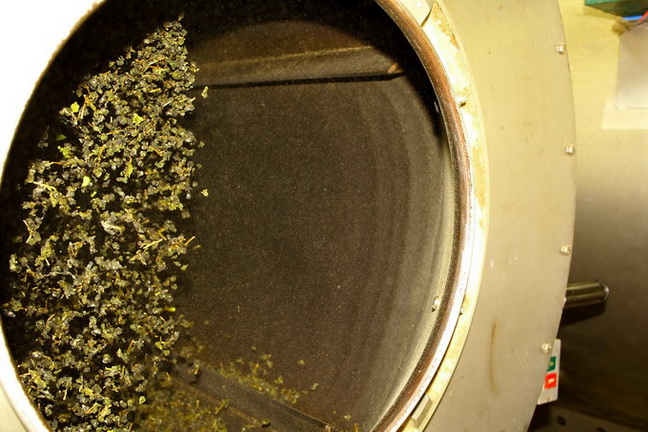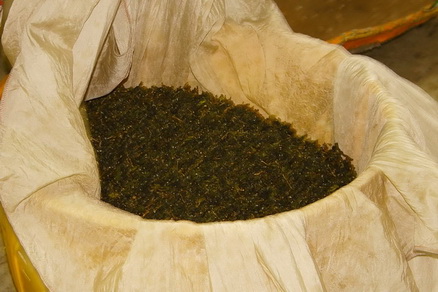 Thank you for visiting HOJO website. If you have any enquiry, please feel free to get in touch with us at
Thank you for visiting HOJO website. If you have any enquiry, please feel free to get in touch with us at
▼ Akira Hojo
▼ Hojo Newsletter




HOME > Oolong Tea > High Mountain Formosa

After plucking, the tea leaves are spread over the ground under the natural sunshine. It is called Sunshine Withering. Usually clouded weather is ideal to grow this tea in order to avoid excess damage on tea leaves. If the sunny weather continues, a black cloth is used to cover the tea leaves to block out the harsh rays of sunshine. With sunshine withering, moisture inside the tea leaves gets evaporated and fermentation is moderately triggered. The tea leaves will gradually start releasing a refreshing aroma.
The method of fermentation for oolong tea is completely different from that of black tea. After the sunshine withering is completed, tea leaves are conveyed into the factory and spread over a sheet.
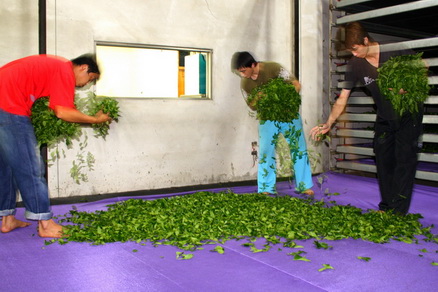

If the tea leaves are rich in moisture, they are spread into a thin layer in order to increase the evaporation process. The tea leaves are then tossed onto a bamboo tray. This agitation and tossing, causes friction and bruises the tea leaves which in turn causes the tea leaves to start fermentation.
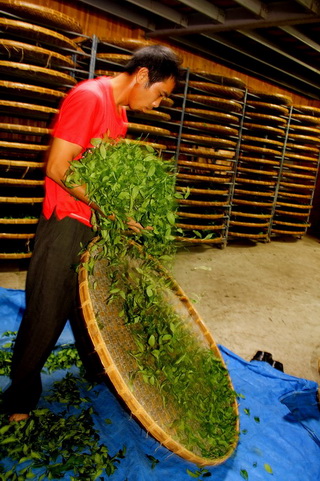
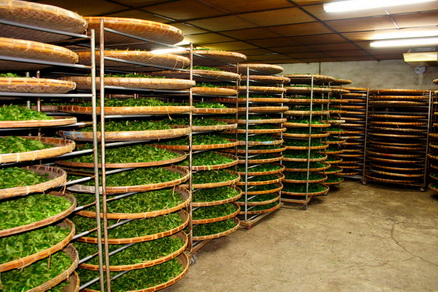
The tray is then placed on a rack and these processes are repeated several times. This is called fermentation. Tea leaves gets oxidation mediated by the oxidative enzyme when the tea leaves get bruised.

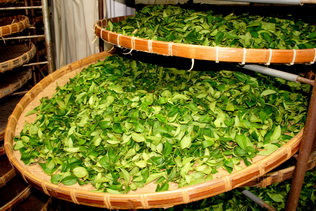
Once entering the fermentation room, you might be surprised with its fragrance. You feel as if you are in a flower garden. Subsequently tea leaves are rotated in a bamboo drum. The tea leaves are lifted and dropped several times. Gradually the edge of tea leaves get damaged and further fermentation takes place. Tea leaves are again spread over the bamboo tray and the same process is repeated over and over again.
Once tea leaves get sufficient fermentation, it starts generating a flowery fragrance. Tea that is processed by a fine tea master is easily distinguishable. The original shape is maintained without any damage done to the tea leaves and only the edge of tea leaves are found to be red in color. This indicates that the tea leaves were successfully semi-fermented and the quality is far different from the tea leaves which have a reddish appearance at the center part of the leaf. Once the tea master finds that fermentation is sufficiently achieved, the tea is then sent for heat treatment in order to arrest further fermentation process. If this is not carried out swiftly, the tea leaves will keep on fermenting and it will finally turn into black tea.
The number of rotation and timing of fermentation is judged based on the moisture content, flavor and color. This decision requires top-notch experienced tea technicians which affects the quality of tea tremendously. All technicians follow the instruction of a tea master. In order to get good quality tea, we need to pick out an excellent tea master.
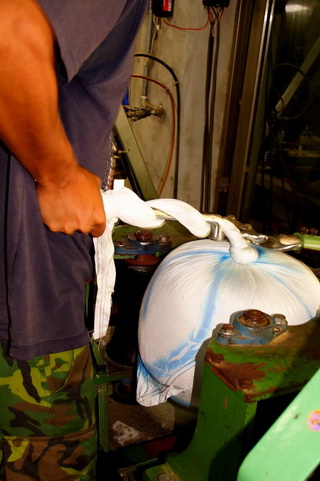
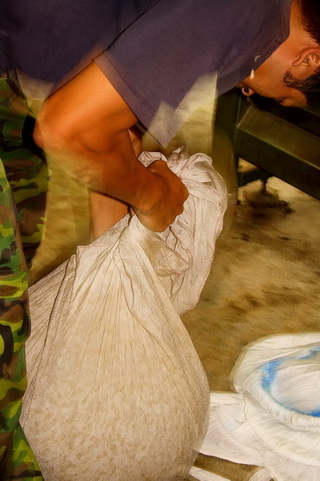
At this stage, tea is fermented and gives an identical character of Dong Ding Oolong. However the tea leave have not been damaged or bruised except for its edges. Without physical damage on tea leaves, it is difficult to "brew". On the other hand, conducting the rolling process as black tea where tea leaves are twisted tautly under strong pressure, the tea leaves will be excessively damaged and will be astringent and harsh in taste. In addition, excessive damage of leaves expose constituents to the oxygen and cause unwanted oxidation that will also affect to the taste and flavor. Therefore the very unique rolling process called "Bag rolling" is used for oolong tea. Literary tea leaves are wrapped in a piece of cloth and rolled. Therefore, the tea leaves are twisted just right with the right amount of pressure applied.
While the tea leaves are still warm and soft, it is quickly wrapped in a cloth bag. About 10-20kg of tea leaf is wrapped and it is made into the size of about a basket ball. Then the end of cloth is mechanically twisted by machine in order to squeeze it into a very solid ball. Finally it becomes as solid as a stone ball and as a result the tea leaves are compressed very tightly.


Then, the cloth ball is clamped between disks at the top and bottom. The top disk does not move while the bottom disk rotate and tea gets further pressure through the motion. After the rolling process is conducted for a while, the bag is opened and the tea leaves are taken out and reheated again in a rotating drum. This is necessary as once the tea leaves cool down, it becomes crispy and easily crushed. This series of processes are repeated several times until it is well rolled.
The tea leaves are gradually tighten and become round in shape. High grade tea is usually very solid and it appears to be dark and shiny as the juice of the tea leaf is squeezed and hardens on the surface of the leaf.
The same sequence is repeated several times. The parameter is varied depending on the condition of leaf such as moisture content. It is important to feel the condition of tea leaf and apply the suitable method of process which is judge expertly by the tea master.
After this rolling process is completed, the tea leaves are dried and this will reduce the moisture content down to 5%.
